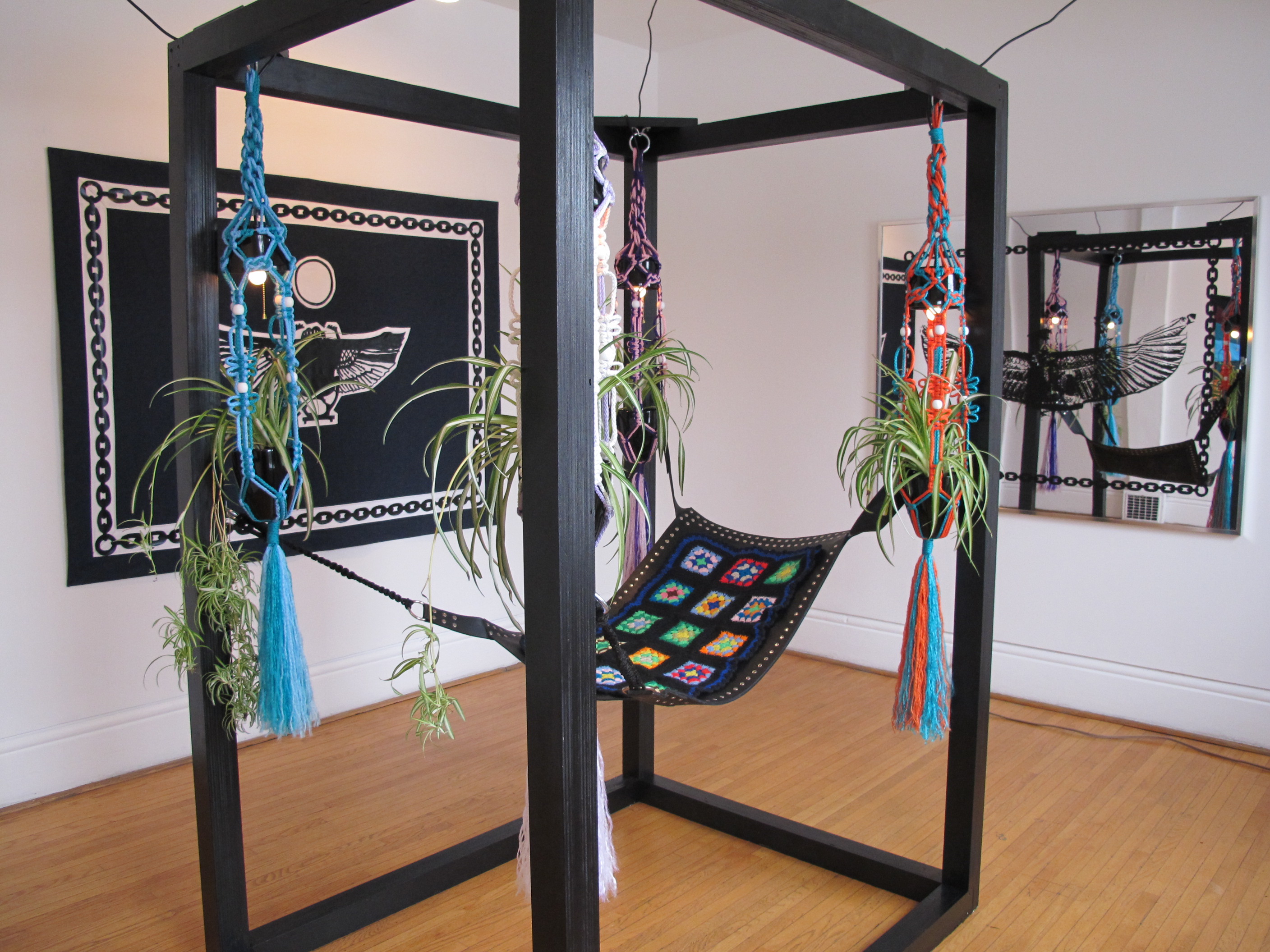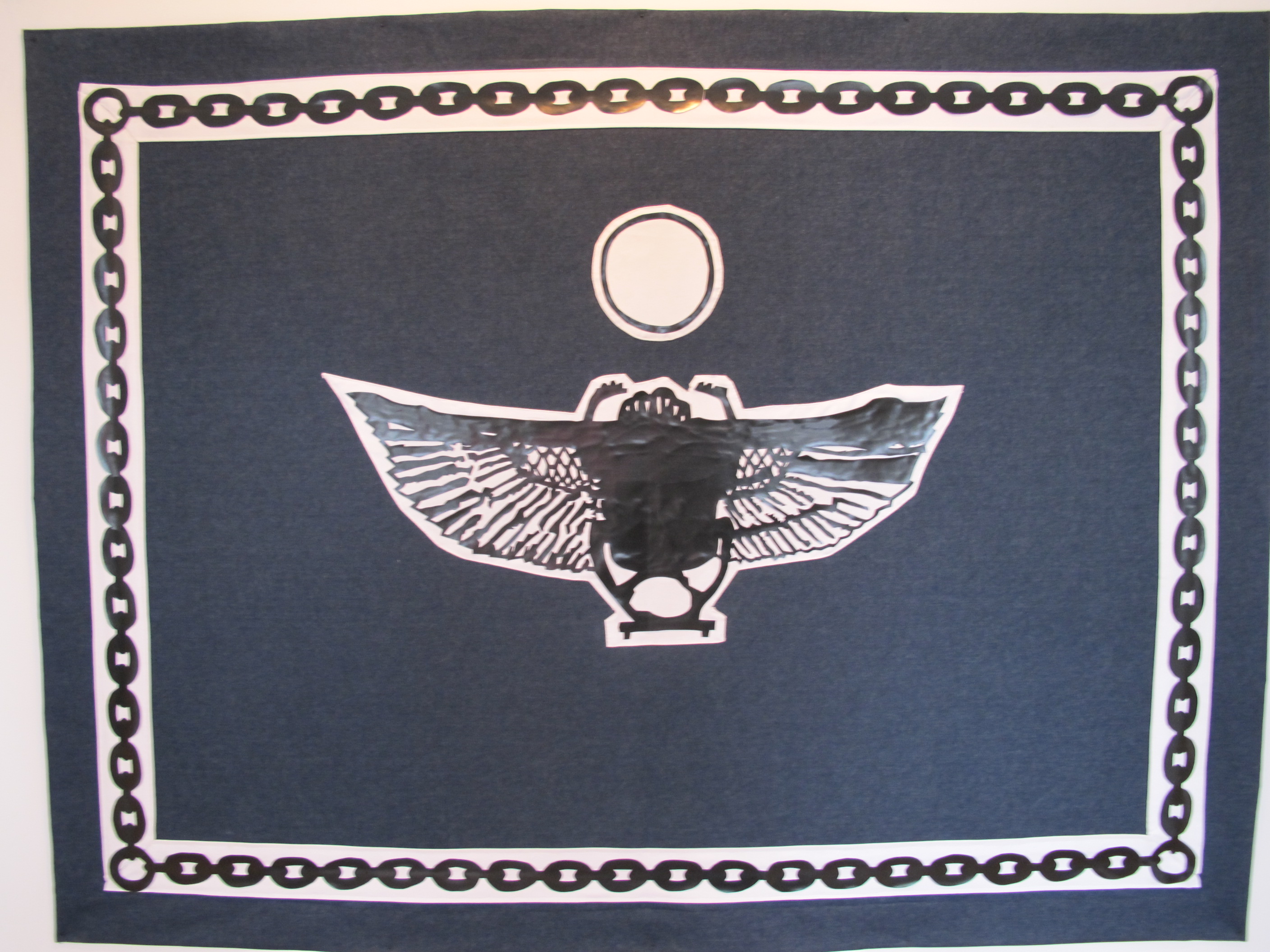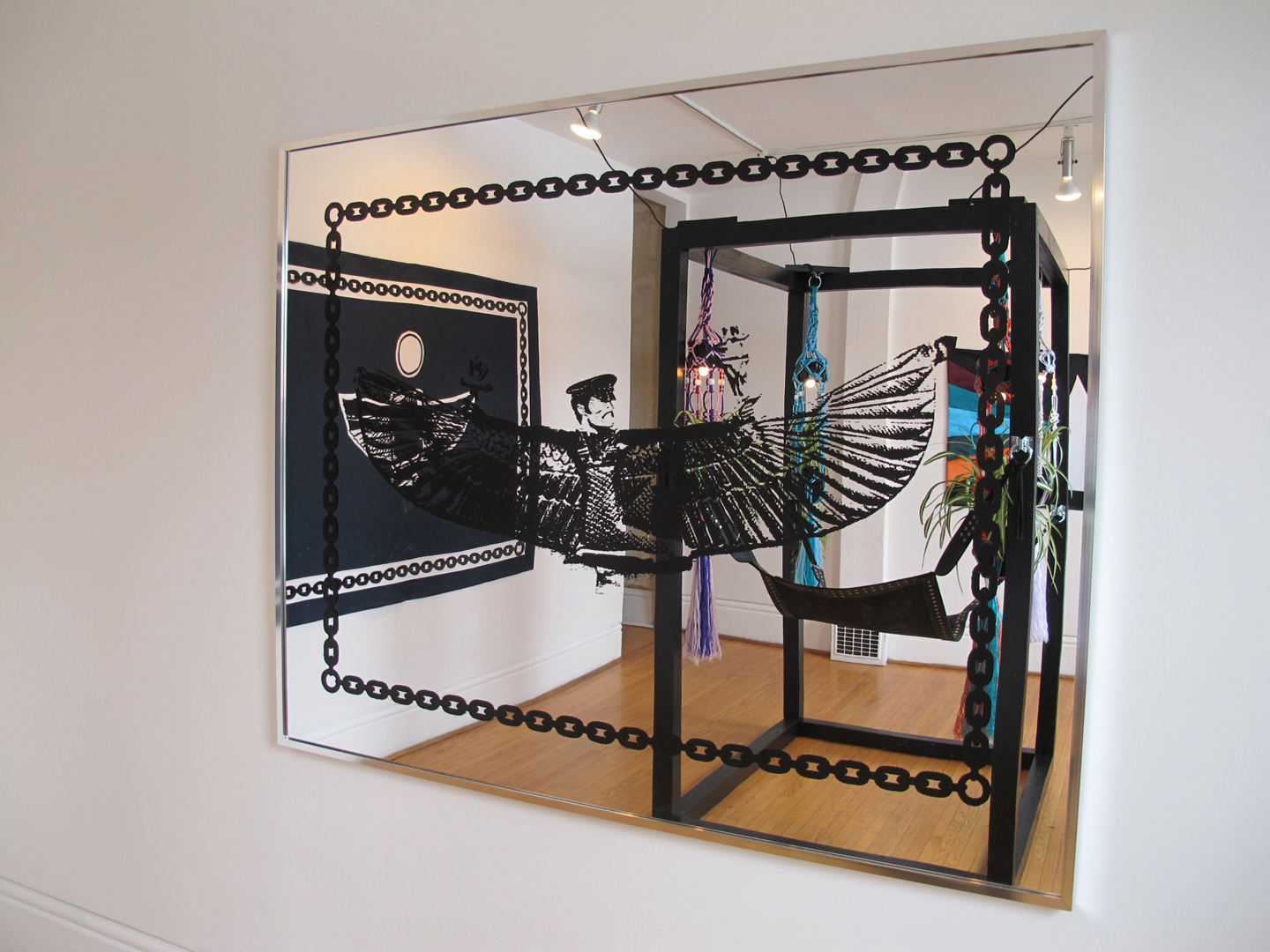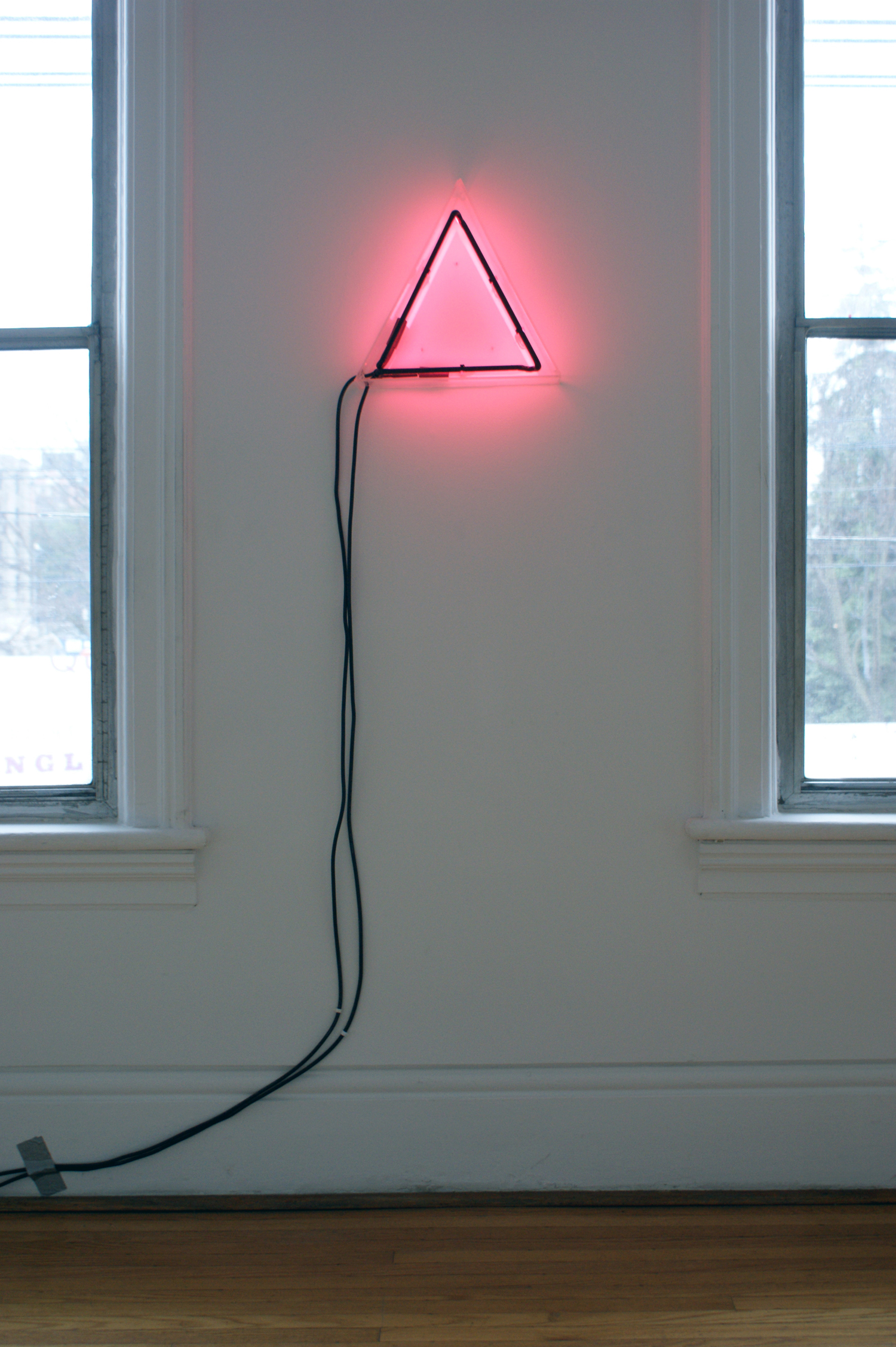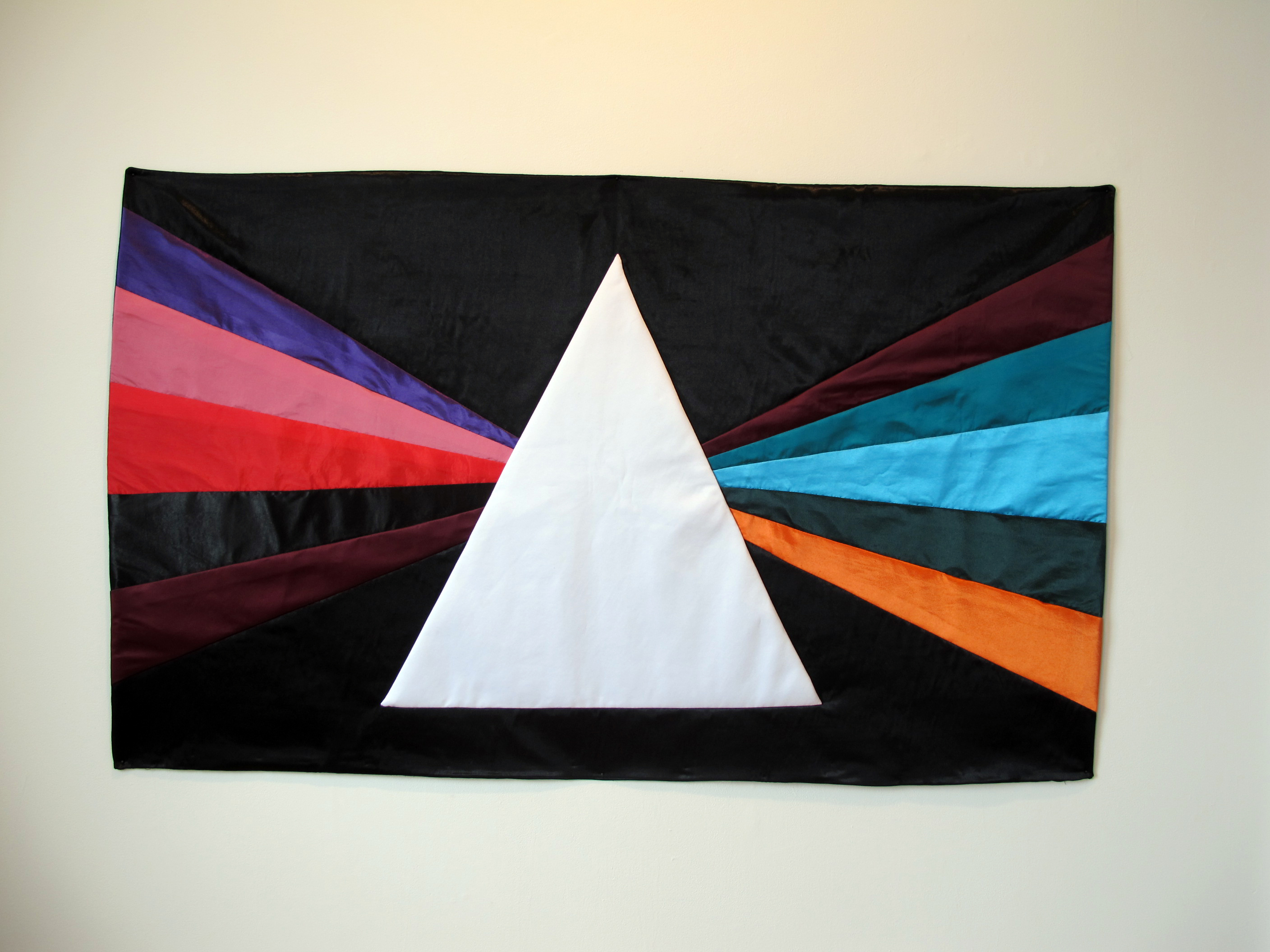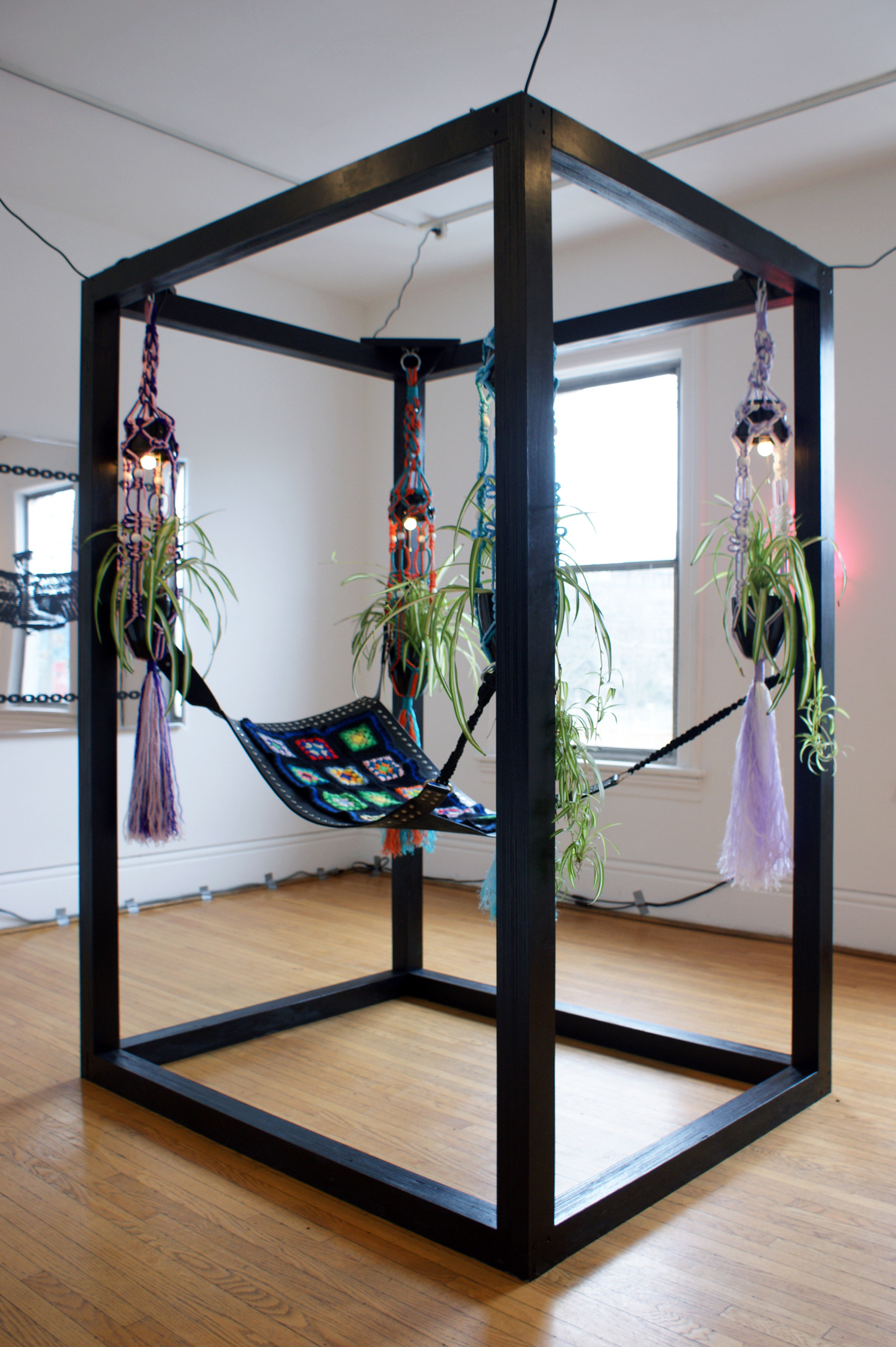Inside The Solar Temple of the Cosmic Leather Daddy
Estate of Will Munro
February 26 - March 27, 2010
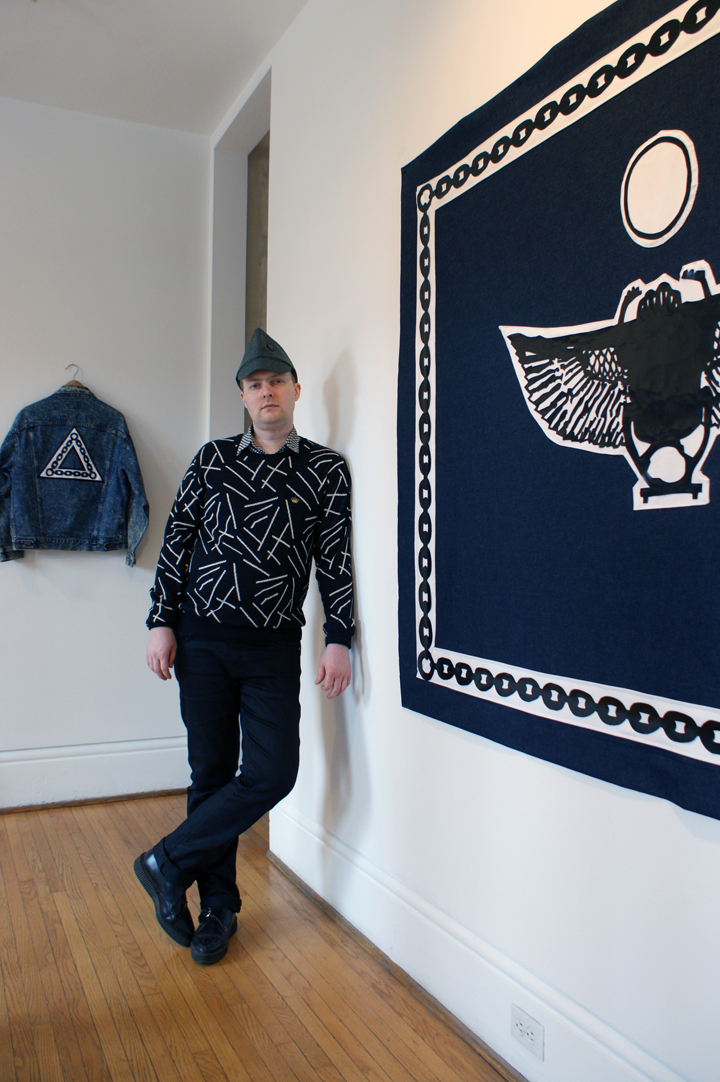
BEHOLD THE SOLAR ANUS, THE SUBMISSIVE CHAMBERS OF THE SUN GODDESS, SCORPIO FISTING, THE MEASURE OF SPACE AND TIME, A STALLION BROTHERHOOD, THE HALL OF TWO TRUTHS, MOON-RA RESURRECTION, SLAVE BROTHELS OF LIBERATION, RAMRODS, THE FALCONS OF THE COSMIC UNDERWORLD, MIDNIGHT SUN CONSCIOUSNESS. ETERNAL.
Munro’s exhibition Inside the Solar Temple of the Cosmic Leather Daddy combines several of the artist’s interests and obsessions. The spiritual iconography of ancient Egypt meets the Queer leather subculture of the 1970’s. Through worship and remembrance, Munro revisits the lives lost during the 1980’s AIDS epidemic, endows them with a sense of eternal life, and allows them to still be present among us. Spurred by his ongoing battle with terminal illness, he has submerged himself in the underworld of temples and glory holes, death and transformation, Kenneth Anger, Georges Bataille, Susan Sontag and King Tut.
Amongst Munro’s work his hand-stitched reconstructed underwear works, which date from 1997, stand out as cultural signifiers for their delicacy of technique, as well as the wit in cultural cross-references, that he consistently employs. In the re-working of this body-based architecture, inlaid with panels sourced from vintage t-shirts and textiles, Munro references the personal spaces of intimacy, sexuality, secrecy, shame, pleasure, empowerment and vulnerability. This work has been widely exhibited in Canada and at John Connelly Presents and Deitch Projects, NYC, amongst other venues.
In collaboration with Jeremy Laing, Munro created the performance and installation project Virginia Puff-Paint, featured in the 2004 exhibition Sinbad in the Rented World curated, with catalogue, by Philip Monk at the Art Gallery of York University, Toronto. Munro presented work in quilting, neon, silkscreen, and sculpture in the 2005 exhibition Blank Generation at Paul Petro Contemporary Art, and was featured in the 2009 exhibition Funkaesthetics curated by Luis Jacob and Pan Wendt at the Justina M. Barnicke Gallery, Toronto, and the Confederation Centre for the Arts, Charlottetown, catalogue forthcoming.
Munro’s work has been reviewed in publications including Canadian Art Magazine, C Magazine, Spacing Magazine, the Globe and Mail, Toronto Star, XTRA! Magazine, Now Magazine, Toronto Life, Butt Magazine, i-D Magazine, Dutch Magazine, Attitude Magazine and The Face.
Munro’s practice, well known within the art world, extends into his community-based activity. His work with sexuality, shame and empowerment is reflected in his work at the Lesbian Gay Bi Trans Youth Line (an Ontario-wide peer-support service for lesbian, gay, bisexual, transgender, transsexual, 2-spirited, queer and questioning young people) where he worked from 1998 to 2008. Considering the relationship between his work with hand-sewn underwear along with his activities as community worker and volunteer, the strong political dimension of Munro’s artistic achievements becomes evident.
Continuing in the footsteps of the artist-collective General Idea -- for whom the creation of works of art was as important as the production of infrastructure for an arts “scene” in Canada -- an exceedingly significant aspect of Munro’s creative work has been Vazaleen, a monthly rock and roll queer event. He started Vazaleen in 2000, and continued this event on a monthly basis for the following seven years.
One of Toronto’s most active promoters of queer culture during the past decade, Munro has brought to Toronto such legendary music performers as The Hidden Cameras, Nina Hagen, Kembra Pfahler, Peaches, The Gossip, Jayne County, Joey Arias, Vaginal Creme Davis and The Toilet Boys amongst many others. In his work with Vazaleen (and his other monthly music events at the time, including Peroxide, NoT.O. and Moustache) he has produced an astonishing amount of artist-multiples and ephemera. Especially noteworthy is Munro’s work with silkscreen posters, produced in the collectively run Punchclock Studio. His silkscreen work is technically ambitious, using multiple screens to create fascinating optical effects. Labour-intensive techniques in hand-stitching and print-making are also used by Munro both for their inherent aesthetic value and for their association with folk and working-class cultural forms and hardcore punk rock culture.
Iconographically, his work also acts as a form of history lesson, making reference to the “whispered histories” of Queer art and activism (with figures such as David Wojnarowicz, Klaus Nomi, General Idea, Andy Warhol and Stephen Sprouse) to create work that is simultaneously artistic production, material culture, and history-writing for sub-alternative communities.
Interview/Installation Views








